Lawyer Kurt Mausert wants to be Family Court judge in Saratoga County, New York. Since his campaign website went up on April 1st, containing the standard copyright notice “All contents © 2008” in its footer, the masthead has featured this rather uninspiring slogan:

Although most family men really hate whining kids, and he is a father of four (ages 8 to 26), Mausert is loudly and plaintively complaining that his opponent — incumbent judge Courtenay W. Hall — has “stolen” his Family Man slogan and violated the copyright held on it by the Mausert election Committee. See “Saratoga County Family Court candidates battle over slogan” (Schenectady Daily Gazette, Sept. 5, 2008; update); “Whose line is it, anyway?” (TU Local Politics weblog, Sept. 2, 2008). A few months ago, Mausert also complained that leaders of the Independent Party treated him unfairly by not interviewing Mausert before choosing to endorse Judge Hall. The candidates are fighting for the Independence Party endorsement in a primary election on Tuesday. They will both be on the November ballot, Hall as a Republican and Mausert as a Democrat (See The Saratogian). [You can find a Campaign Update at the end of this post, describing Judge Hall’s victory in the November election and related topics.]
 According to Mausert’s campaign manager, attorney RIchard Moran, all of Mausert’s campaign literature has included the Family Man slogan, but when Judge Hall sent out his first flier about a week ago he also claimed to be a “Family Man for Family Court.” Moran told the Gazette:
According to Mausert’s campaign manager, attorney RIchard Moran, all of Mausert’s campaign literature has included the Family Man slogan, but when Judge Hall sent out his first flier about a week ago he also claimed to be a “Family Man for Family Court.” Moran told the Gazette:
“Even if we hadn’t taken the care to post our copyright notice, it is simply unfair for one candidate to swipe another’s popular and well used slogan.”
Judge Hall had no comment, but his campaign manager Jeffrey Bagnoli told the Gazette:
“The allegations in that press release are patently untrue. Judge Hall used the slogan ‘A family man for Family Court’ 10 years ago, when he ran for the office for the first time.”
According to the Gazette:
A press release issued by the Mausert campaign about the accusations includes the question, “Is Courtenay Hall a Thief?,” which Bagnoli said is defamatory. Mausert said the question does not defame the judge, though.
“It’s not defamatory, it’s a question,” Mausert said. “I’m asking the question, ‘Do the people think my slogan was stolen?'”
Bagnoli says the charge violates the judicial code of ethics. Mausert responded that the press release merely asks a question and is therefore not defamatory. In the print edition of the Schenectady Gazette, Kurt is quoted saying:
 “You have two tall, thin, bald white guys running for the same office. If you met me five weeks ago and then received his literature today with the same message on it, it’s going to be confusing.”
“You have two tall, thin, bald white guys running for the same office. If you met me five weeks ago and then received his literature today with the same message on it, it’s going to be confusing.”
more (3 PM): The Glens Falls Post Star has more coverage with revealing quotations,”Candidate claims opponent stole his slogan” (by Drew Kerr, Sept. 4, 2008):
“The Web site has a copyright on it, but Mausert said he has no intentions of pursuing a legal case against Hall. Instead, he said the incident speaks more to Hall’s character.
 ” ‘Forget about any man-made law,’ Mausert said this week. ‘This is about integrity. People’s words and phrases are just as much their possession as an automobile.’
” ‘Forget about any man-made law,’ Mausert said this week. ‘This is about integrity. People’s words and phrases are just as much their possession as an automobile.’
“. . . ‘For him to come out a week and a half before the primary with the same thing, it’s bound to cause confusion,” Mausert said. “I have to think this is deliberate.’
Calling Mausert’s allegations ‘over the top’ and ‘smear campaigning’, Hall’s campaign manager Jeffrey Bagnoli, responded that “It’s preposterous to think that because he puts the slogan up on a Web site that he thinks he owns it.” According to the Post Star, “Bagnoli also said Mausert should ‘give a lot more credit to voters in Saratoga County’ who should be able to differentiate the two.”
Meanwhile, over at Court-o-rama, Anne Skove suggests sending the two candidates to mediation, and notes how important it is to see the way judicial candidates handle conflict. She adds, “Usually we bemoan the fact that the public knows too little about the candidates. In this case voters may have learned just enough.”
 update (September 14, 2008): Judicial Candidate Kurt Mausert left comments here at f/k/a on September 11th (and often thereafter), as well as at Prof. Randazzo’s Legal Satyricon weblog, and Legal Blog Watch, defending his accusations against Judge Hall. Although tempted to respond point by point, I’ll let the reader decide for himself or herself whether it’s important for a judicial candidate to do legal research before leveling accusations at an opponent claiming a violation of law; whether his charges are persuasive that using the “Family Man” slogan means Judge Hall lacks integrity, and that voters are likely to somehow confuse the two candidates because they are focusing on the (totally pedestrian) slogan, rather than the issues; and whether calling suggesting that your opponent is a thief and Prof. Randazazzo “arrogant” and a “haughty snob” suggests appropriate judicial temperament — or just desperation.
update (September 14, 2008): Judicial Candidate Kurt Mausert left comments here at f/k/a on September 11th (and often thereafter), as well as at Prof. Randazzo’s Legal Satyricon weblog, and Legal Blog Watch, defending his accusations against Judge Hall. Although tempted to respond point by point, I’ll let the reader decide for himself or herself whether it’s important for a judicial candidate to do legal research before leveling accusations at an opponent claiming a violation of law; whether his charges are persuasive that using the “Family Man” slogan means Judge Hall lacks integrity, and that voters are likely to somehow confuse the two candidates because they are focusing on the (totally pedestrian) slogan, rather than the issues; and whether calling suggesting that your opponent is a thief and Prof. Randazazzo “arrogant” and a “haughty snob” suggests appropriate judicial temperament — or just desperation.
 Kurt Mausert appears to have many fine qualities, and is making proposals for improving Family Court with which I, as a former Law Guardian and mediator, agree (e.g., having a website that helps explain how the court works and what to expect as parties; and using mediation to resolve disputes). It’s too bad — especially since his website tells us “Kurt has trained in the martial arts (Kempo) and works out regularly at Global Fitness in Saratoga Springs” — that he has come out swinging with such wimpy accusations. Two points that seem especially worth mentioning before we close:
Kurt Mausert appears to have many fine qualities, and is making proposals for improving Family Court with which I, as a former Law Guardian and mediator, agree (e.g., having a website that helps explain how the court works and what to expect as parties; and using mediation to resolve disputes). It’s too bad — especially since his website tells us “Kurt has trained in the martial arts (Kempo) and works out regularly at Global Fitness in Saratoga Springs” — that he has come out swinging with such wimpy accusations. Two points that seem especially worth mentioning before we close:
- With a few minutes of Googling, Lawyer Mausert or Lawyer Moran could have learned (as I did) that slogans are not protected under copyright law. Thus, the U.S. Copyright Office tells us they “cannot register claims to exclusive rights in brief combinations of words such as: . . . Catchwords, catchphrases, mottoes, slogans, or short advertising expressions.” (Circular 34, rev’d Feb. 2006) A distinctive commercial slogan can sometimes get a trademark (see My Norrby’s treatise, “Trademark Protection of Slogans“), but as the Fair Shot weblog has noted, “unlike the commercial case, in which dilution can be stopped by a lawsuit, there is no recourse for dilution of a political slogan in common currency”. [Note: In comments below, Mr. Mausert asserts a common law (as opposed to federal statutory) trademark violation has taken place based on New York law, and that experts tell him he has a good case under that theory.]
- “A Family Man for Family Court” is not a “message” and is only “popular” in the sense that it has been used over and over by less-than-ingenious Family Court candidates.
update: (12 PM): Commenting on our post at Legal Satyricon, First Amendment and Copyright Law Professor Marco Randazza says, “At least one of the candidates doesn’t know the difference between copyright and trademark — and certainly knows nothing about either field.” (4 PM): Getting into the election year groove, Carolyn Elefant offers a thorough (but un-snarky) summary of this controversy at Legal Blog Watch this afternoon.
afterwords (3 PM): Always pleased to learn a little etymology, Prof. Yabut thinks its pretty interesting that “The term ‘slogan’, is of Gaelic origin, and descends from the word ‘sluagh-gharim’, war cry.” (The Swedish National Encyclopedia, 1995, via My Norrby)
update: (September 10, 2008): According to Channel 6, Judge Hall beat Kurt Mausert for the Independent Party slot in the November election for Saratoga Family Court. with 149 votes to his challenger’s 126 votes. (WRGB.com, Primary results: Saratoga County) As noted above, Mausert already has the Democratic Party endorsement, and Judge Hall is running as the Republican candidate.
update (September 19, 2008): Click for the decisions in Mausert V. Hall (September 6, 2008) by the group Fair Campaign Practices for the Capital Region, Inc regarding Mausert’s claims against Hall. FCP made “No Finding” on the issue of Hall misappropriating the “copyrighted” slogan, saying “Copyright infringement is a legal claim that is appropriately resolved by the courts.” FCP did note that Hall had failed to identify the name and address of the sponsor for that piece of campaign literature (FCP Principle 5).
Campaign Update (Nov. 5, 2008): According to the Schenectady Gazette, Republican Family Court Judge Courtenay W. Hall defeated his challenger Democrat Kurt Mausert yesterday — with 58% of the vote — even though Barack Obama received 51% of the votes in the County, where a majority of the electorate are registered as Republicans. Obama received almost 52,000 votes; Hall got over 48,000; Mausert garnered less than 36,000. (In addition, Democratic challenger Jeffrey Wait has apparently beat the Republican incumbent Saratoga City Court Judge Matthew Dorsey for the City Court post.)
The headline in the Saratogian newspaper declares this morning that “Hall overcomes accusations for a win” (Nov. 5, 2008). Reporter Anne Marie French explained (prior to the final vote count being tallied):
“Despite an election season plagued with allegations by his opponent of unfair campaign practices, Courtenay Hall seemed on his way to being elected by county residents to serve a second 10-year term in his current post as Saratoga County Family Court judge. Hall, as he did in his campaign, remained reserved with his comments about the race and his opponent with final figures not being confirmed.
 “Hall’s opponent, Democrat Kurt Mausert, a criminal lawyer based in Saratoga Springs, filed five separate complaints on three occasions with the Fair Campaign Practices For the Capital Region Inc., which were related to a variety of issues.
“Hall’s opponent, Democrat Kurt Mausert, a criminal lawyer based in Saratoga Springs, filed five separate complaints on three occasions with the Fair Campaign Practices For the Capital Region Inc., which were related to a variety of issues.
“Mausert suggested Hall had stolen his campaign slogan prior to the September primary, failed to identify the sponsor of campaign literature, refused to debate after repeated requests, and improperly pressured attorneys to participate in his campaign. The FCP issued no findings or findings of no unfair campaign practices in all of the complaints.”
- Here are links to the relevant Fair Campaign Practices decisions: 2008-1 Mausert v. Hall, 2008-5 Mausert v. Hall, 2008-12 Mausert v. Hall. The FCP noted that Mausert had not suggested debate procedures that would ensure the moderator was impartial or that the moderator would be able to approve questions for their appropriateness under the Judicial Code of Ethics.
one mosquito
whining all day…
my pillow
mosquitoes whine– 
even the rustling bamboo
is slandered
the whining mosquito
also thinks I’m old…
edge of my ear
… by Kobayashi Issa, translated by David G. Lanoue
p.s. Having started this mosquito theme, and having written no new poetry this week, dagosan wants to share this photo taken at the end of our block (Washington Ave. in the Schenectady Stockade) a couple weeks ago, and a poem it inspired.

swat swat
swat swat swat
calamine sunset
.. by David Giacalone – The Stockade Spy (Sept. 2008)
 . . Yesterday’s weather here in Upstate New York was beyond picture perfect — pleasing all of our senses — and beyond my ability to capture adequately in words. Hoping to savor every moment of the gorgeous day, the f/k/a Gang spent the last Saturday evening of Summer 2008 sitting on a brand new bench on the banks of the Mohawk River here in Schenectady’s Stockade neighborhood. My haijin friends couldn’t join me in Riverside Park last night, for the summer’s penultimate sunset, but here are a few of their poems of the season, with images I snapped on September 20, 2008 between 7 and 8 P.M. (click on the images to enlarge).
. . Yesterday’s weather here in Upstate New York was beyond picture perfect — pleasing all of our senses — and beyond my ability to capture adequately in words. Hoping to savor every moment of the gorgeous day, the f/k/a Gang spent the last Saturday evening of Summer 2008 sitting on a brand new bench on the banks of the Mohawk River here in Schenectady’s Stockade neighborhood. My haijin friends couldn’t join me in Riverside Park last night, for the summer’s penultimate sunset, but here are a few of their poems of the season, with images I snapped on September 20, 2008 between 7 and 8 P.M. (click on the images to enlarge).![]()
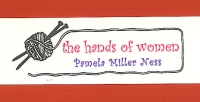 A year ago today, we had the honor to reproduce and present here at f/k/a the entire contents of the haiku and tanka chapbook “the hands of women” by Pamela Miller Ness. The loving commemoration of the “needlewomen” in Pamela’s life is a lovely reminder of the changes and constants in the cycles and seasons of our lives. Here are three of the ten poems you will find in the hands of women:
A year ago today, we had the honor to reproduce and present here at f/k/a the entire contents of the haiku and tanka chapbook “the hands of women” by Pamela Miller Ness. The loving commemoration of the “needlewomen” in Pamela’s life is a lovely reminder of the changes and constants in the cycles and seasons of our lives. Here are three of the ten poems you will find in the hands of women: Finally, Marcel Marceau’s death as autumn arrived last year inspired this poem by dagosan:
Finally, Marcel Marceau’s death as autumn arrived last year inspired this poem by dagosan:






 . . QUAIL OPTS OUT
. . QUAIL OPTS OUT









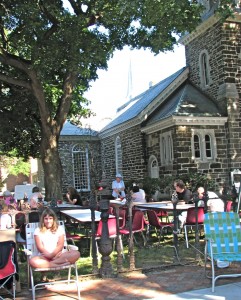
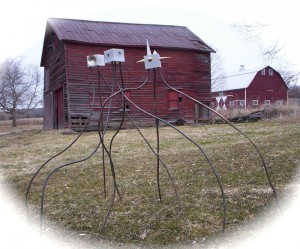


 .. Frank Gilmore won the Best of Our Neighbors award for one of his paintings. (I’d love to show it to you, but my camera captured mostly glare off the glass in its frame.) Frank also displayed the
.. Frank Gilmore won the Best of Our Neighbors award for one of his paintings. (I’d love to show it to you, but my camera captured mostly glare off the glass in its frame.) Frank also displayed the 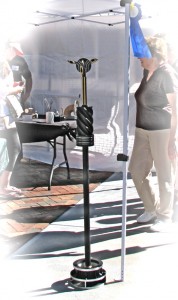

 As the Gazette notes today: “[T ]he original charges against Randolph fell apart. [Gregory] Karaskiewicz, the arresting officer, never did sobriety tests and never saw Randolph driving, District Attorney Robert Carney said previously. Randolph ultimately pleaded guilty to misdemeanor aggravated unlicensed operation, not felony drunk driving, which was the original charge.”
As the Gazette notes today: “[T ]he original charges against Randolph fell apart. [Gregory] Karaskiewicz, the arresting officer, never did sobriety tests and never saw Randolph driving, District Attorney Robert Carney said previously. Randolph ultimately pleaded guilty to misdemeanor aggravated unlicensed operation, not felony drunk driving, which was the original charge.” What’s going on here? Addressing that question, Rex Smith editor of the Albany Times Union
What’s going on here? Addressing that question, Rex Smith editor of the Albany Times Union 

 Our team of cracked reporters has gone to the far corner of our block to solve the riddle posed seven days ago, with photos and discussion, in the post “
Our team of cracked reporters has gone to the far corner of our block to solve the riddle posed seven days ago, with photos and discussion, in the post “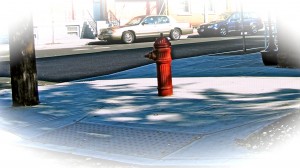
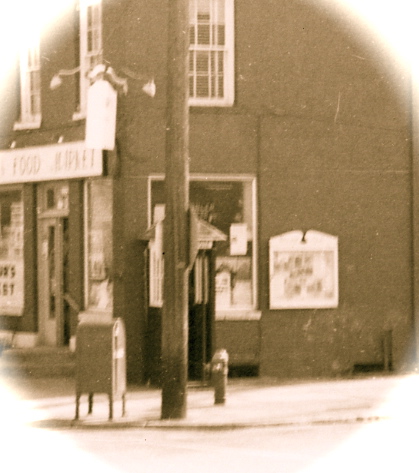 This photo taken in 1962, which I found on Monday at the Schenectady County Historical Society’s Library, seemed to suggest that the hydrant had never been particularly close to either the curb or the telephone pole.
This photo taken in 1962, which I found on Monday at the Schenectady County Historical Society’s Library, seemed to suggest that the hydrant had never been particularly close to either the curb or the telephone pole. for public servants, I was lucky enough to find Steven Caruso of the Water Department’s engineering unit in and amiable yesterday (Aug. 28). Mr. Caruso informed me that he had been on site when the sidewalk was poured and the hydrant was not moved during that project — in other words, it is in the same spot where it’s always been. Steven was even nice enough to agree with me that the hydrant’s location is unusually far from the curb and in the way of foot traffic. He/we could not, however, explain my — or my neighbors’ — failure to notice the odd location before the new sidewalk was installed.
for public servants, I was lucky enough to find Steven Caruso of the Water Department’s engineering unit in and amiable yesterday (Aug. 28). Mr. Caruso informed me that he had been on site when the sidewalk was poured and the hydrant was not moved during that project — in other words, it is in the same spot where it’s always been. Steven was even nice enough to agree with me that the hydrant’s location is unusually far from the curb and in the way of foot traffic. He/we could not, however, explain my — or my neighbors’ — failure to notice the odd location before the new sidewalk was installed.
 All this talk of hydrants, poor vision and bumping into things, sent me to the magic search box at David Lanoue’s
All this talk of hydrants, poor vision and bumping into things, sent me to the magic search box at David Lanoue’s 


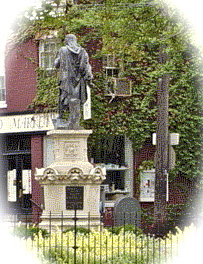


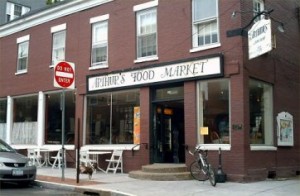
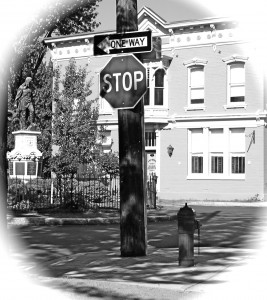



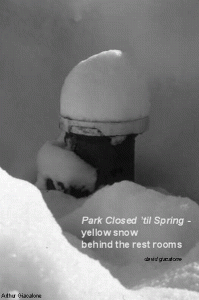


 . . If you’re a labor union and you lose 40 percent of the elections in which workers vote whether or not to have you represent them. And further, if you find it relatively easy to get unorganized workers to sign cards saying they want you to represent them, especially when you stand right over them and watch them sign what do you do?
. . If you’re a labor union and you lose 40 percent of the elections in which workers vote whether or not to have you represent them. And further, if you find it relatively easy to get unorganized workers to sign cards saying they want you to represent them, especially when you stand right over them and watch them sign what do you do? . . . The AFL/CIO is the primary proponent — and probably named — EFCA,
. . . The AFL/CIO is the primary proponent — and probably named — EFCA,  . . . .. bipartisan? . . .
. . . .. bipartisan? . . . 
 Stockadians — residents of the
Stockadians — residents of the 
 . . If you’re interested in insightful and lively commentary on the history and future of suburbia and urban development in America, and the likely effects on our way of life of $4/gal. gasoline, head over to
. . If you’re interested in insightful and lively commentary on the history and future of suburbia and urban development in America, and the likely effects on our way of life of $4/gal. gasoline, head over to  From his nonfiction landmark “
From his nonfiction landmark “

 Here’s a
Here’s a 
 I have no answers and nothing profound to add. I wish Sloan had not decided to kill himself. If he was determined to do so, I wish he had done it in a way that did not traumatize so many others. But, most of all, as I said at the head of this posting, I hope Sloan Carafello will rest in peace. May we improve our ability and our willingness to help other troubled souls like Sloan Carafello.
I have no answers and nothing profound to add. I wish Sloan had not decided to kill himself. If he was determined to do so, I wish he had done it in a way that did not traumatize so many others. But, most of all, as I said at the head of this posting, I hope Sloan Carafello will rest in peace. May we improve our ability and our willingness to help other troubled souls like Sloan Carafello.


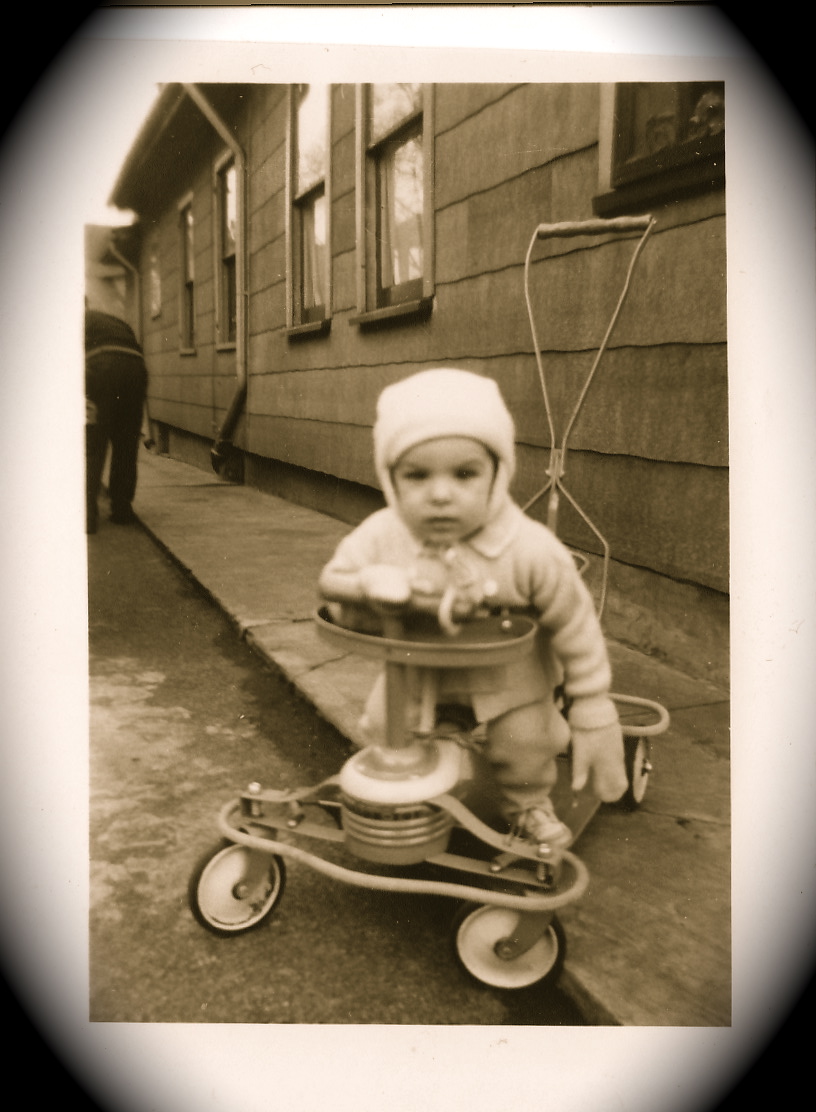
 . . . . . . . .
. . . . . . . . A headline in the print edition of this morning’s Schenectady Daily Gazette got me thinking about the words “
A headline in the print edition of this morning’s Schenectady Daily Gazette got me thinking about the words “
 The City of
The City of 
 -n
-n k
k t
t
 -n
-n
 Something tells me, we better listen to the word synecdoche being pronounced, if we really want to master the sound of the word. Try
Something tells me, we better listen to the word synecdoche being pronounced, if we really want to master the sound of the word. Try It’s
It’s 
 And, please don’t forget to save fuel by
And, please don’t forget to save fuel by